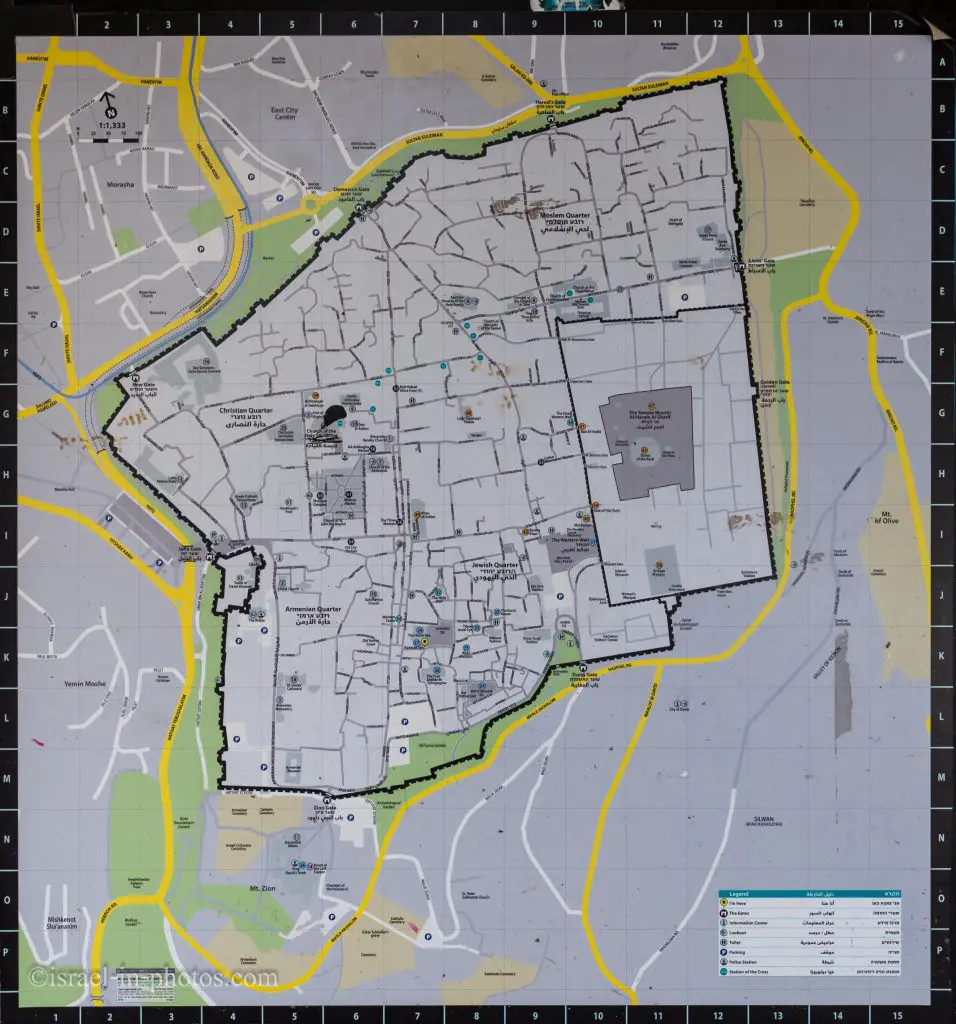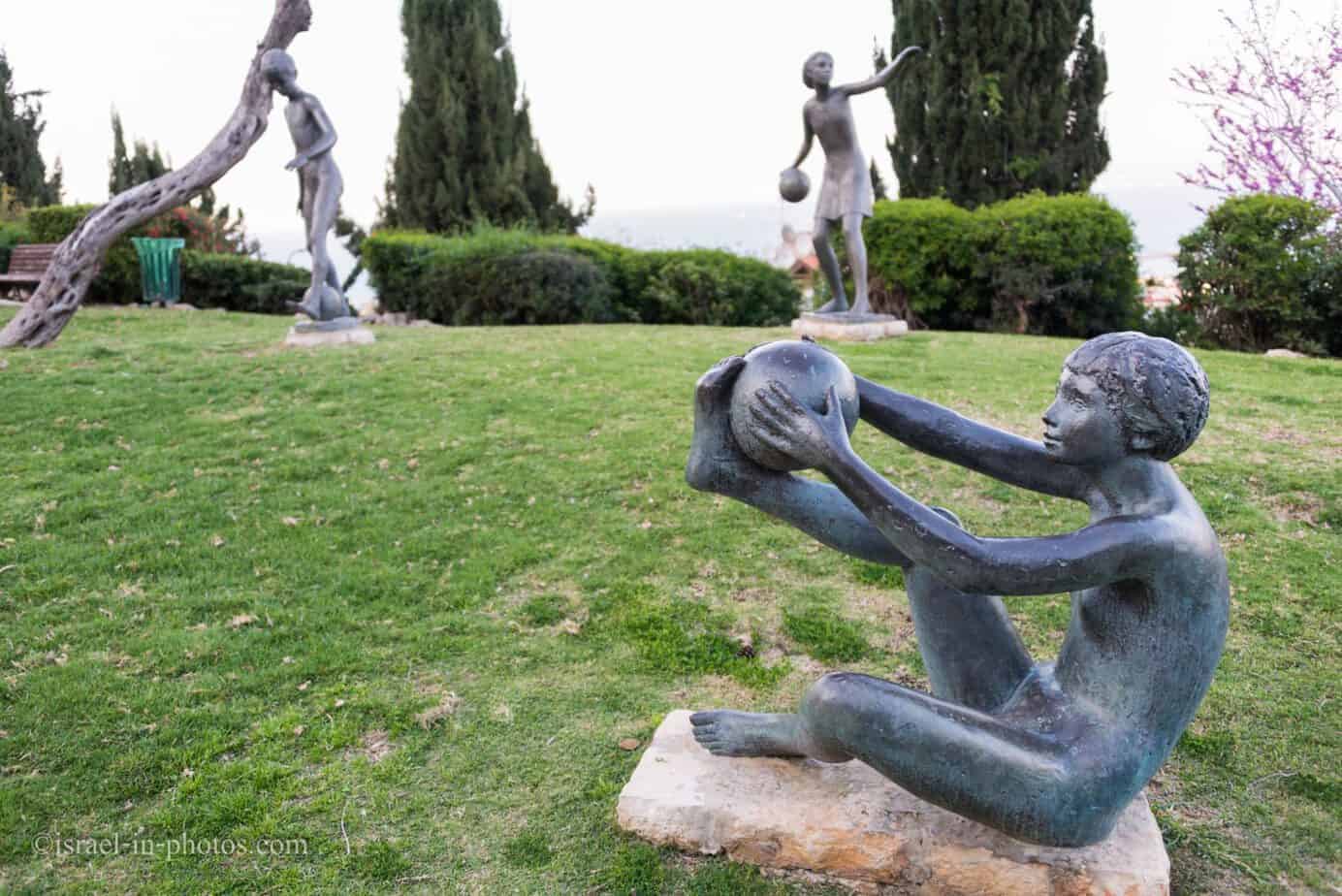Zedekiah’s Cave – Full Guide – Quarries of King Solomon
Under the Old City of Jerusalem, you can find Zedekiah’s Cave. Since it served as a quarry, it is also called the quarries of King Solomon.
Note: Zedekiah’s Cave was reopened after additional restoration, and now it also offers an Audiovisual Show. During August 2025, we joined the show, and here is a short video from our visit:
Table of Contents
Shortly about Zedekiah’s Cave
Under the old city’s buildings, a wonderful cave is hidden, wide, and beautiful. Zedekiah’s Cave is one of Jerusalem’s marvels, and it is open to the public.
Zedekiah’s Cave is 225 m long, and it served as an ancient quarry. The stone known by its Arabic name “Malaka” was mined here – a fine building stone that served to create the magnificent buildings of Jerusalem. As known today, the mining began at the First Temple period. Josephus called it the “Cave of Kings”. In the early 20th century, stones were still mined in the cave and were used to build the “Clock Tower”, previously standing above the Jaffa Gate – but destroyed during the British Mandate.
Note: Unless stated otherwise, all quotes were taken from the official site.
Map
Zedekiah’s Cave is located close to Damascus Gate. It is under the Old City of Jerusalem, but the entrance is from outside the Old City.
Directions for drivers: Link to Waze and Link to Google Maps
Directions for public transport: Link to Moovit
Interactive map of the area:
You can find the following map in several places in the Old City of Jerusalem.
Note: You can click on the map to enlarge it.
On the photo of the map above, Zedekiah’s Cave is located at the top of square C7.
Directions and Parking
You can reach Zedekiah’s Cave either by car or by public transport. My favorite way is taking the light train to the Damascus Gate Station and walking from there. For detailed directions, check out the Old City of Jerusalem.

You will see the entrance to the Cave when walking from Damascus Gate to the Flowers Gate.

Opening Hours and Entrance Fee
You can visit the Cave by yourself (self-guided tour) or join the audiovisual show.
| Visit Type | Self-guided Tour | Audiovisual Show |
|---|---|---|
| Opening Hours | Winter: Sunday – Thursday: 09:00-16:00. Summer: Sunday – Thursday: 08:00-17:00. Friday and Saturday: Closed. | Sunday – Thursday – a reservation on the website is required. Friday and Saturday: Closed. |
| Entrance Fee | Adult – 25 NIS Child (5 – 18 years old) / student/senior – 15 NIS | Adult – 40 NIS Child (5 – 18 years old) / student/senior – 30 NIS |
Notes:
- Opening hours and entrance fees were updated in August 2025. In any case, recheck the official site before visiting.
- You can purchase tickets online on the official website.
Contact Information
Contact details of the East Jerusalem Development Ltd. – Tourist site: official site
Phone: 02-6277550
Email: tourism@pami.co.il
Events
Zedekiah’s Cave is used both for private events and concerts. In recent years, many popular Israeli artists have performed there. If you are interested in joining one of the concerts, check the official site.
Description
Note: the source of the following information is the translation from Wikipedia.
Zedekiah’s Cave is huge, carved into the hard chalk rock typical of the Old City. Its area is about 9,000 square meters, its length is about 300 meters, its maximum width is about 100 meters, and its maximum height is about 15 meters. The only opening of the Cave is relatively small and lies between Damascus Gate and the Flower Gate.
The Cave extends beneath the Muslim quarter houses, between the northern walls of Jerusalem to the Via Dolorosa Street area of the Muslim Quarter, north of the Temple Mount. It appears to have continued to the southeast but is blocked by landslides, and some have speculated that the Cave had previously reached the Temple Mount. The Cave is hewn nine meters below the houses built above it and is divided into large spaces and halls.
There is a little spring in the depth of the Cave, although it may be a drainage channel that was damaged when quarrying the Cave, and its water flows in. Quarry marks and graffiti inscriptions of modern times can be seen on the cave walls.
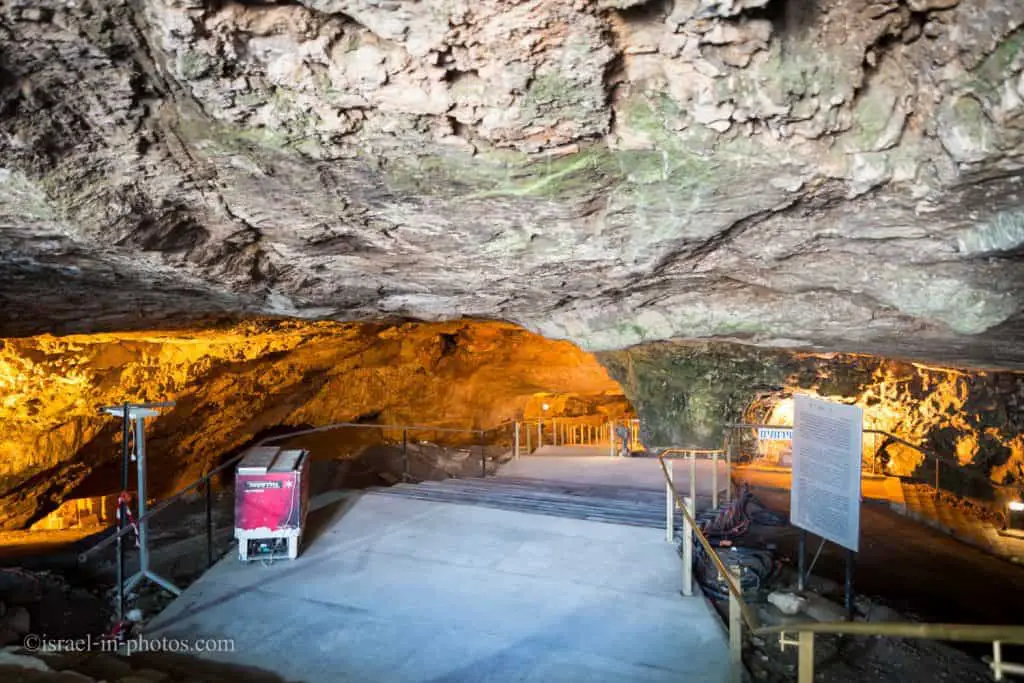
Note: In the photo above, you can see the steps to the right. They lead to restrooms. And the steps in front of you lead further into the Cave.
Ark of the Covenant
When entering Zedekiah’s Cave, you will see a stand with a short explanation about the Cave, and you will also see the next stand.
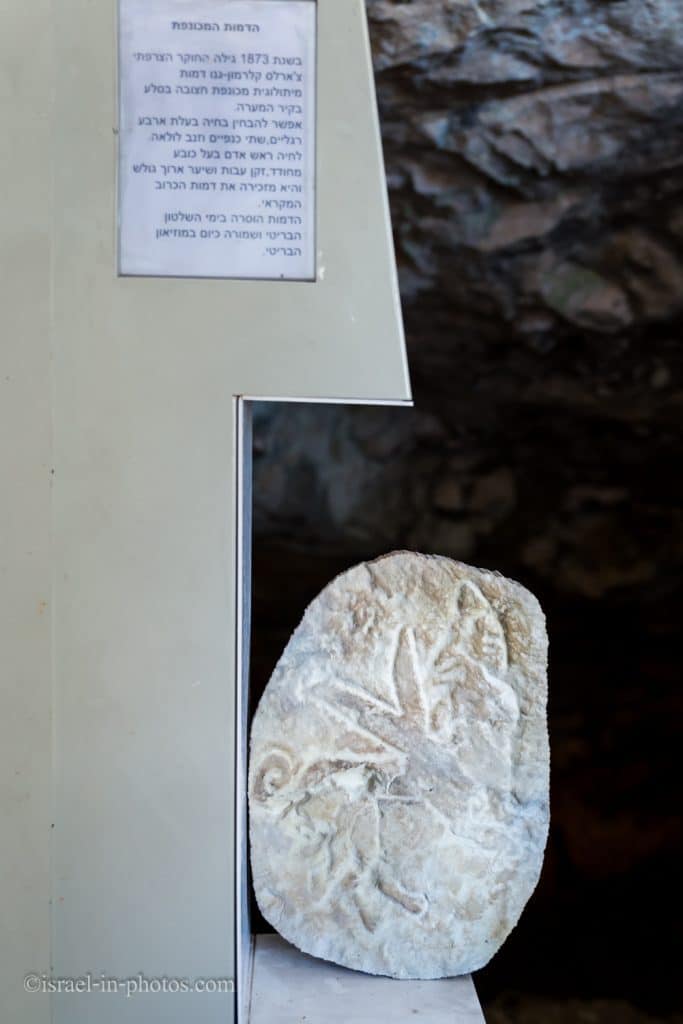
The sign says that in 1873, French researcher Charles Simon Clermont-Ganneau found an engraved winged mythological creature inside the Cave. You can see an animal with four legs, a pair of wings, and a tail. This creature has a human head with a conical hat and a beard. And it reminds one of the figure of a cherub.
The figure was removed during British governance. Today it is stored in the British Museum.
Cherubs were a popular Old Testament motif, and the two giant cherubs around the Holy Ark in Solomon’s Temple were especially famous. Thus, some people consider the cherub engraving as evidence that the quarry dates from the time of Solomon. Some even think that the Holy Ark was/is hidden in this Cave.
And now, let’s head further into the Cave and talk about its usage.

Usage
Note: the source of the following information is the translation from Wikipedia.
At first, Zedekiah’s Cave was a small natural cave, as its entrance shows its only natural component. The Cave became a quarry, and an ample space was created following the many quarrying operations carried out for centuries.
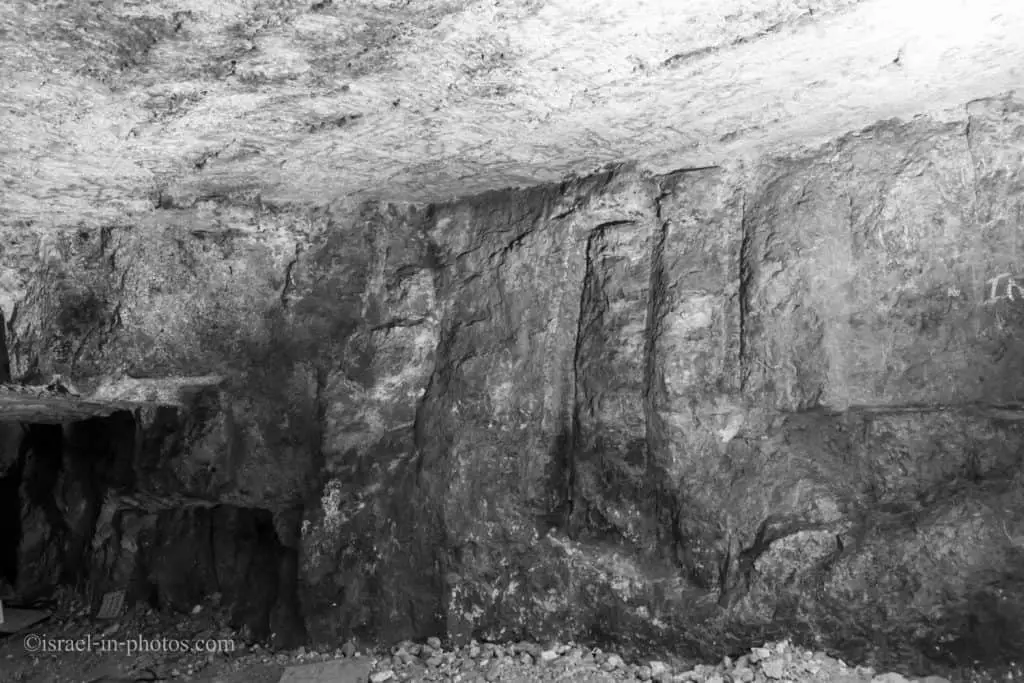
The caverns in the Cave are separated by walls and rock slabs left by the excavators to support the cave ceiling as the quarrying and deepening progressed. The cave floor level drops slightly as you move away from the doorway. And it seems to have been so deepened over the years to prevent the foundations of the townhouses above the Cave. Today’s entrance to the Cave is much higher than it used to be, following the accumulation of dirt and debris that has not been evacuated.
Names of the Cave
Note: the source of the following information is the translation from Wikipedia.
A Jewish tradition, which first appears in 16th-century sources, links the Cave to the escape of Zedekiah, the last queen of the Kingdom of Judah, to the Jericho plain from burning Jerusalem.
The event is described in the Book of Jeremiah 52 (NIV):
4 So in the ninth year of Zedekiah’s reign, on the tenth day of the tenth month, Nebuchadnezzar king of Babylon marched against Jerusalem with his whole army. They encamped outside the city and built siege works all around it. 5 The city was kept under siege until the eleventh year of King Zedekiah.
6 By the ninth day of the fourth month the famine in the city had become so severe that there was no food for the people to eat. 7 Then the city wall was broken through, and the whole army fled. They left the city at night through the gate between the two walls near the king’s garden, though the Babylonians[a] were surrounding the city. They fled toward the Arabah,[b] 8 but the Babylonian[c] army pursued King Zedekiah and overtook him in the plains of Jericho. All his soldiers were separated from him and scattered, 9 and he was captured.
According to this tradition, the Cave was invaded on both sides so Zedekiah could hide and escape.
Jewish tradition even links the spring in the Cave to the tears of the blind king, who is still mourning Jerusalem’s destruction to this day. Therefore, it is called Zedekiah Tears Spring. However, the exact time the Cave began to be named after King Zedekiah cannot be tracked.
The English name of the Cave, “King Solomon’s Quarries,” dates back to King Solomon’s days, some 300 years before Zedekiah’s reign.
The Arabs call the cave “King’s Cave” or “Cave Korah.” The first name is influenced by the English name, which attributes the Cave to King Solomon, while the second name is based on local folklore, which identifies the Cave with the place where his committee was buried after the land swallowed them. Either way, identifying the Cave with different kings seems to be related to the type of limestone in which it is called “Malka.” This stone is convenient for quarrying, weather-resistant, and resistant to air contact due to its natural coating in Nari, making it suitable for royal buildings.
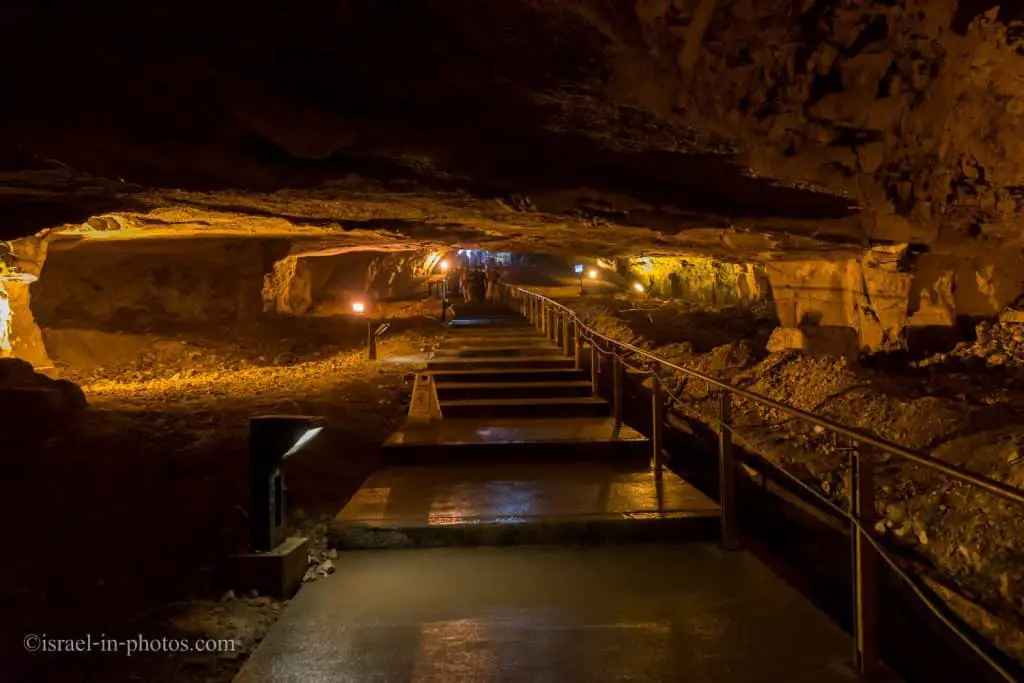
History
Note: the source of the following information is the translation from Wikipedia.
Traditions that do not have archaeological references attribute the beginning of the Cave’s activities to the First Temple period and even to King Solomon’s day. Dating rests on the biblical account of Solomon’s construction of the first temple. As described in 1 Kings 5 (NIV):
15 Solomon had seventy thousand carriers and eighty thousand stonecutters in the hills, 16 as well as thirty-three hundred[e] foremen who supervised the project and directed the workers. 17 At the king’s command they removed from the quarry large blocks of high-grade stone to provide a foundation of dressed stone for the temple.
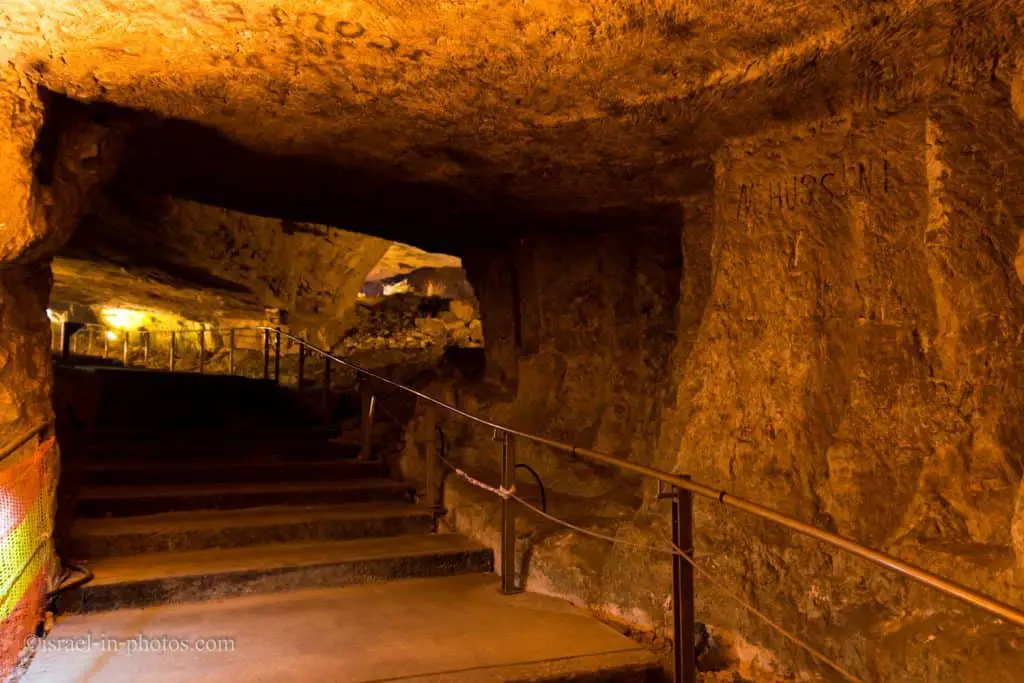
In 1873, the French researcher Charles Simon Clermont-Ganneau discovered a relief of a winged creature measuring 35 x 27 inches on a wall in the cave entrance hall. See the Ark of the Covenant section above.
And though there is no clear evidence from the First Temple period, the Cave is rich in testimonies from the Second Temple period. It is common to identify Zedekiah’s Cave as King Herod’s primary source of stone when he built the Temple of Herod about two thousand years ago. This identification relies on the quarrying style that was then acceptable and is evident in the cave walls. Moreover, the size of the stones extracted from the Cave characterizes the walls of the Temple Mount.
It should also be noted that the Cave is close to the Temple Mount and is slightly higher, making it very easy to move the stones.
Examining the stones that make up the Western Wall revealed that they are geologically identical to Zedekiah Cave’s rocks, confirming the assumption that they originated from this Cave.
It is possible that King Agrippa, Herod’s grandson, also used Zedekiah’s Cave in his many Jerusalem construction projects, and perhaps even Agrippa II, who built the third wall in the first century AD.
You can find the complete historical information here.
And the next big hall was a surprise for me.
Freemasonry
Note: the source of the following information is the translation from Wikipedia.
Many members of the Israel Exploration Fund, who explored Zedekiah’s Cave in the 19th century and dated it to King Solomon’s days, were members of the Masonic Order.
Shlomo is considered the Order’s spiritual father, and he is even known as the “First Freemason.” Because of this, Charles Warren, a foundation member and a freemason, offered to hold the annual bureau ceremony in the largest hall in the Cave. For approval, Warren held meetings with Ottoman government officials, who were also members of the Order.
Various ceremonies have been held in this hall for many years, so today, it is called the Masonic Hall. Masonic activity in Zedekiah Cave ceased with Jerusalem’s partition in 1948, and the ceremonies returned to Zedekiah’s Cave only after the Six-Day War.

Zedekiah’s Tears
We continued deeper inside Zedekiah’s Cave until we reached “Zedekiah’s Tears.”

As I mentioned in “Names of the Cave,” Jewish tradition links the spring in the Cave to the tears of the blind king, who is still mourning Jerusalem’s destruction to this day.
In any case, the water is not drinkable.
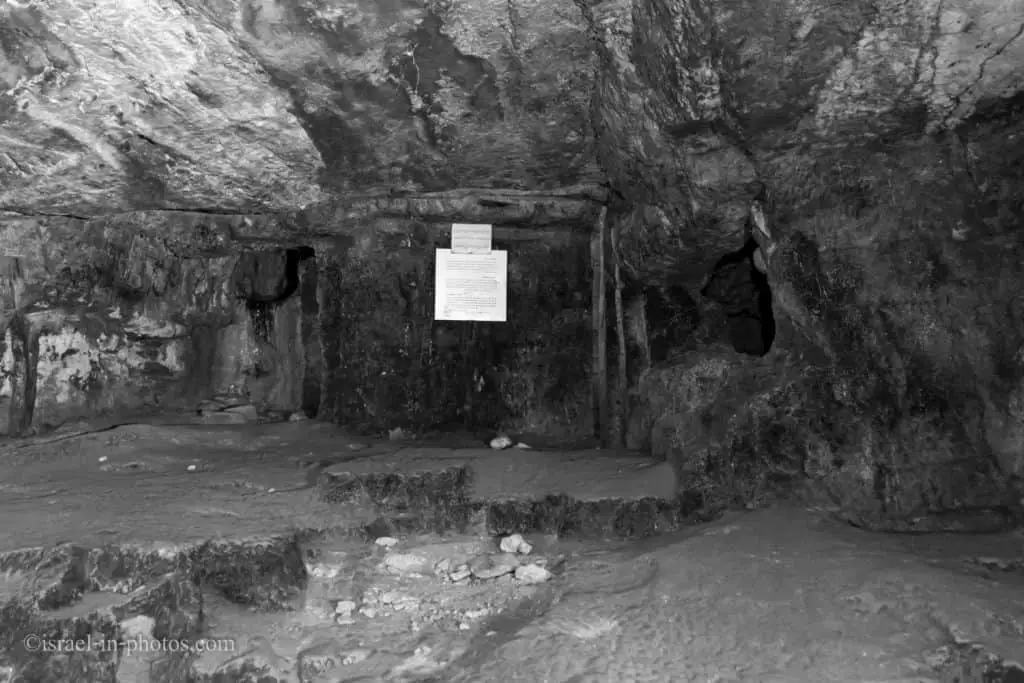
We descended a little further after this point, but there was ongoing construction, and additional access was restricted. There is still work in Zedekiah’s Cave to make it accessible to tourists. And my future readers will be able to go even deeper into the Cave.
But we turned back and started to make our way to the entrance. Here are several additional photos:
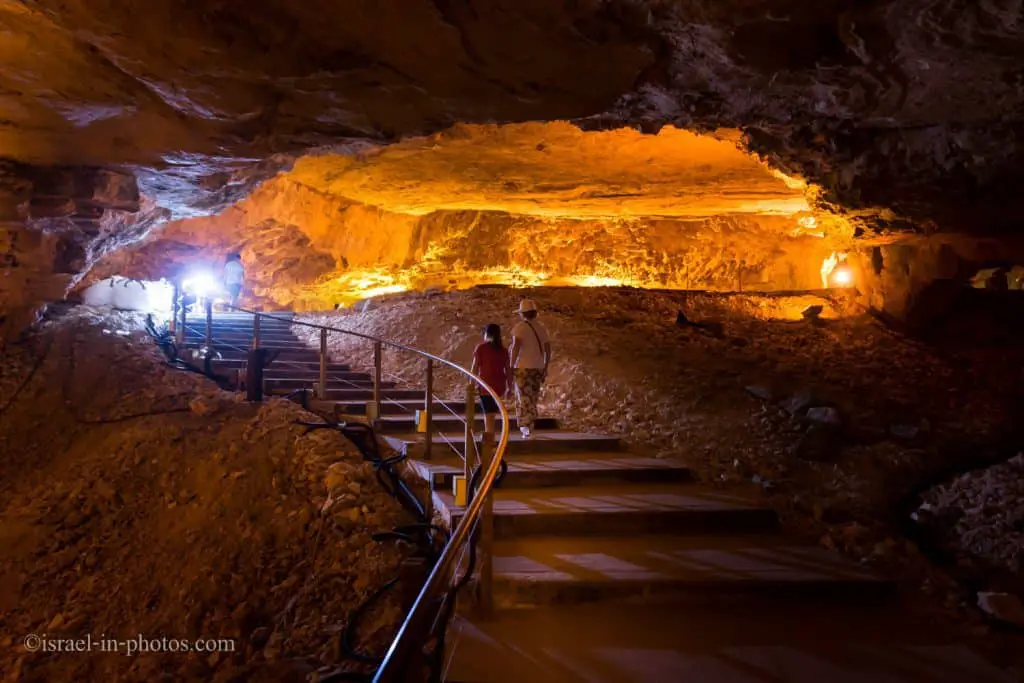

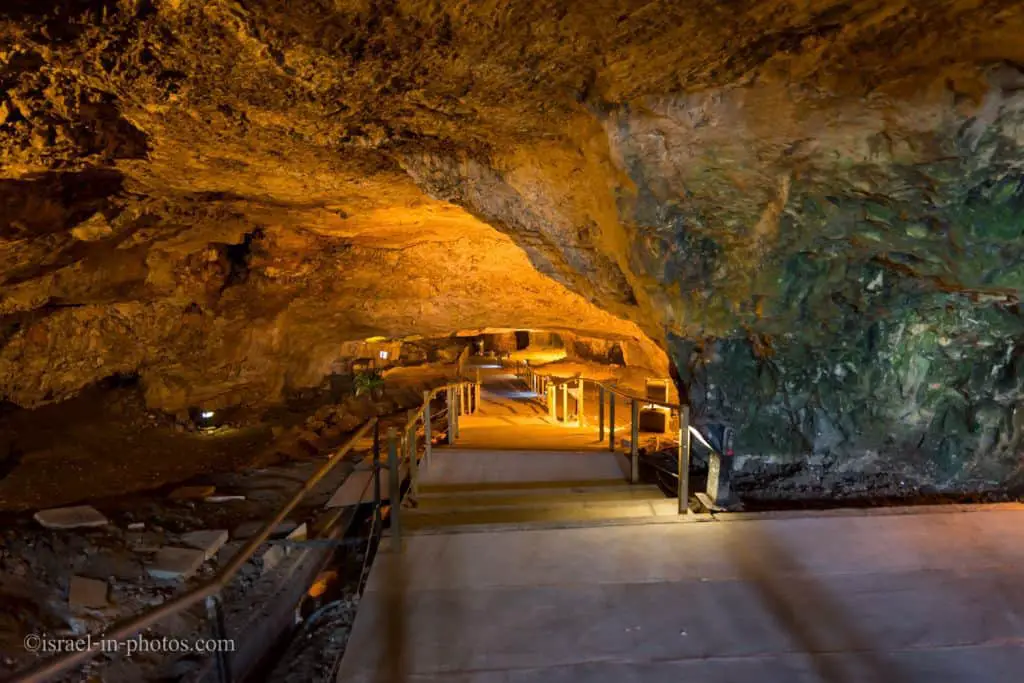
Our visit was relatively short, taking us over half an hour. But, if you are visiting without kids or joining a tour, you can spend up to one and a half hours there.
Summary
Zedekiah’s Cave is an excellent place for a short visit. It is especially inviting on a hot and rainy day. But to enjoy it fully, you have to know the history. So either join a guide or read my blog ;)
Moreover, since the acoustics are excellent, you can enjoy Zedekiah’s Cave differently. Read more in the events section.
East Jerusalem Development Ltd. manages Zedekiah’s Cave. They also manage the Ramparts Walk and other sites in Jerusalem. Hence, you can combine Zedekiah’s Cave with other nearby attractions. See the map at the top of this post for suggestions.
Have you ever been to Zedekiah’s Cave? Tell us about your experience in the comments below.
That’s all for today, and I’ll see you on future travels!
Stay Tuned!
Additional Resources
Here are several resources that I created to help travelers:- Trip Planner with Attractions and Itineraries is the page that will help you create your perfect travel route.
- What is the Best Time to visit Israel? To answer this question, we will consider the weather, prices, holidays, festivals, and more.
- Information and Tips for Tourists to Israel will answer the most common questions tourists have about Israel (including safety, passports, weather, currency, tipping, electricity, and much more).
- Israel National Parks and Nature Reserves include a complete list, top ten, map, tickets (Israel Pass, Matmon, combo), and campsites.
- If you are looking for things to do, here are the pages for Jerusalem, Tel Aviv, Haifa, Sea Of Galilee, Akko (Acre), Eilat, Nazareth, Safed (Tzfat), and Makhtesh Ramon.


